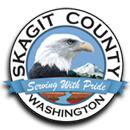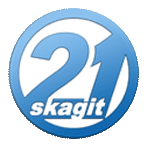Salmon Strategy
|
|||
| The
Salmon Policy Resolution orders all county departments to work on salmon
recovery through several different strategies and initiatives, and directs
departments to consider salmon protection and recovery in all their actions.
To effectively monitor progress, the Salmon Policy Resolution requires an
annual “Salmon Action Report.” This document is the first such
report, and it reveals that Skagit County’s policy has produced clear
and decisive results since the Salmon Policy Resolution was executed a mere
four months ago.
Skagit County has:
The Skagit River is a regional treasure. Producing a third of Puget Sound’s fresh water and home to a third of its threatened wild Chinook salmon, the Skagit River is a natural resource important to both the state and the nation. Skagit County and its citizens are committed to protecting and restoring salmon runs on the Skagit through aggressive habitat acquisition. But Skagit County’s small property taxpayer base puts severe constraints on the funding available for the task. It is imperative that state, federal, tribal, and private entities interested in seeing the recovery of Skagit River salmon begin ramping up their financial contribution to habitat acquisition, a time-limited endeavor given the increasing intensity of development pressure we face in the Skagit Valley. Because lands that are best for salmon habitat are most often those worst for people given the increasingly-negative effects of climate change, we believe this strategy makes sense for humans and fish alike. Download
Skagit County 2007 Salmon Action Report (2.6MB pdf) |
|||





